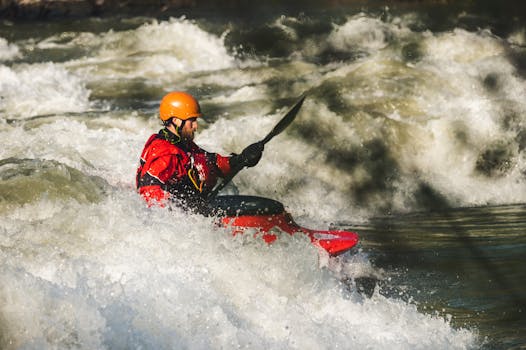White Water Rafting in the Grand Canyon: A River Runners Guide
The Grand Canyon, a geological marvel carved by the mighty Colorado River, offers an unparalleled white water rafting experience. The river's relentless force has sculpted a labyrinth of towering cliffs, deep canyons, and spectacular rock formations that provide a stunning backdrop for this adrenaline-fueled adventure. This guide aims to equip prospective river runners with the necessary knowledge to navigate these turbulent waters safely and enjoyably.

White water rafting in the Grand Canyon is not just about braving the rapids; it's about immersing oneself in an environment that has been millions of years in the making. The journey takes you through layers of geological history, with each bend in the river revealing another awe-inspiring vista. It's a place where the raw power of nature is palpable, and every moment spent on the water deepens your connection with this extraordinary landscape.
Safety is paramount when undertaking such an adventure. The Colorado River's rapids range from class I (easy) to class V (extremely difficult), and each requires a different level of skill and preparation. Novices should consider guided tours that provide professional guidance and equipment. Seasoned rafters may opt for self-guided trips but should be aware of the risks involved. Always check weather conditions before setting off and ensure you have adequate supplies for the duration of your journey.
The practicalities of white water rafting in the Grand Canyon also warrant careful consideration. The best time to go is between April and October when temperatures are milder, and water levels are more predictable. However, this is also peak season, so booking well in advance is advisable. Essential gear includes a life jacket, helmet, sturdy footwear, sun protection, and waterproof bags for personal items.
The thrill of navigating the Colorado River's rapids is matched only by the serenity of its calmer stretches. These provide opportunities for wildlife spotting, fishing, or simply soaking up the canyon's majestic beauty. Campsites along the riverbanks offer a chance to rest, refuel, and reflect on the day's adventures under a star-studded sky.
The Grand Canyon's white water rafting experience is as diverse as its landscape. Some may seek the adrenaline rush of tackling the river's most challenging rapids, while others may prefer a leisurely float trip interspersed with hikes to hidden waterfalls or ancient Native American sites. Whatever your preference, this journey promises a unique blend of excitement, discovery, and personal growth.
White water rafting in the Grand Canyon is more than an adventure; it's a journey into the heart of one of the world's most iconic natural wonders. It challenges you physically and mentally, tests your resilience, and rewards you with unforgettable experiences and memories. It's about pushing your limits, embracing the unexpected, and forging a deeper appreciation for nature's raw beauty and power.
As you navigate these turbulent waters, remember that each rapid conquered, each mile covered, is not just about reaching your destination but also about the journey itself. The Grand Canyon's awe-inspiring landscape serves as a reminder of nature's grandeur and our place within it. So whether you're a novice rafter seeking an exciting new challenge or a seasoned river runner looking for your next big adventure, white water rafting in the Grand Canyon promises an experience like no other.
How to get there
The journey to the Grand Canyon for white water rafting usually begins at one of the key hubs such as Las Vegas, Phoenix, or Flagstaff. These cities offer extensive air, rail, and road connections, making them accessible for travelers from around the globe. From these points, visitors can rent a car or join a guided tour, which typically includes transport services to the river launching sites. The most common launching spots for rafting are Lees Ferry, Diamond Creek, and Pearce Ferry. Once you reach these spots, your river adventure begins!
Key places to visit
During your rafting journey through the Grand Canyon, there are extraordinary sites and landmarks worth visiting. Among these are:
- Phantom Ranch - the only lodge below the canyon rim, accessible by boat, foot, or mule.
- Havasu Creek - known for its stunning blue-green waterfalls and inviting swimming spots.
- Elves Chasm - a hidden oasis perfect for a refreshing dip amid the canyon's soaring walls.
- Deer Creek Falls - featuring a dramatic plunge into the Colorado River, this spot is perfect for photography and cooling off under the cascade.
Useful websites to visit
To plan and facilitate your Grand Canyon white water rafting trip, here are some invaluable web resources:
- National Park Service (NPS): www.nps.gov/grca/index.htm - Official source for park updates, safety guidelines, and permit information.
- Rafting Magazine: www.raftingmag.com - Provides comprehensive guides on white water rafting techniques and gear reviews.
- Grand Canyon Conservancy: www.grandcanyon.org - Offers detailed information on conservation efforts & educational resources about the canyon.
- Colorado River Discovery: www.raftthecanyon.com - Focuses on rafting tour bookings and detailed trip descriptions.